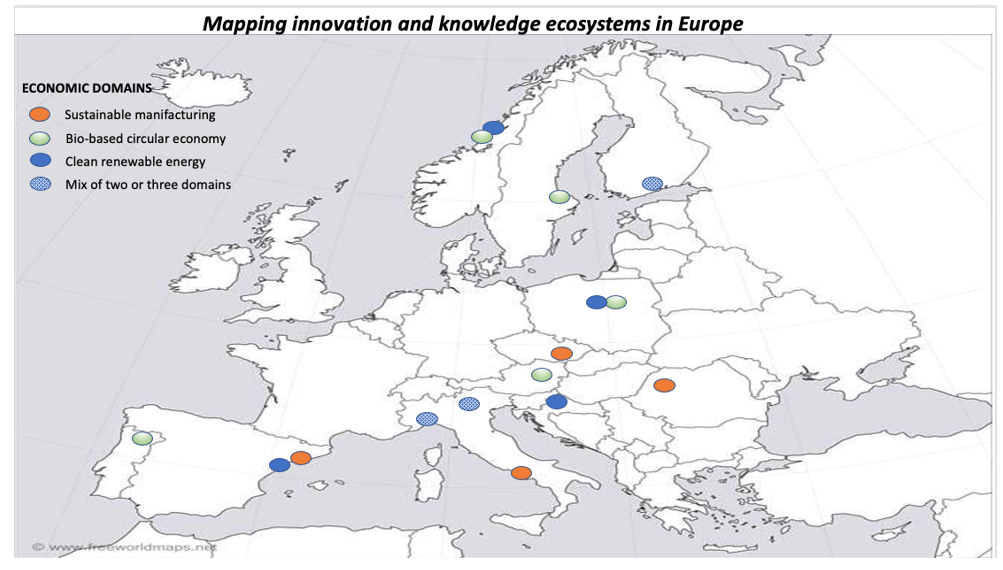Mapping case studies of knowledge ecosystems across European regions is ready!
The aim of “EU place-based Research and Innovation ecosystems. Mapping case studies of knowledge ecosystems across European regions” is to provide a census of existing European knowledge ecosystems starting from the countries and regions involved in the ERA_FABRIC project.
The research has been conceived and carried out within the task 2.2 of the above-mentioned project. It logically follows the previous document released Deliverable D2.1 “Knowledge ecologies for territorial value creation”.
A wide variety of countries was included in the selection of the 15 ecosystems, in particular:
- 2 cases from Norway (of which one includes also Sweden) (Region Trøndelag – Stockholm);
- 1 case from Finland (Greater Helsinki);
- 1 from Austria (Lower Austria); – 2 from Spain (Catalonia);
- 1 from Portugal (Norte);
- 3 from Italy (Emilia Romagna, Liguria, Campania)
- 2 from Poland (Mazowieckie);
- 1 from Czech Republic (South Moravia);
- 1 from Croatia (Jadranska Hrvatska)
- 1 from Romania (Nord-Vest).
All the countries participating in the project (plus Finland and Sweden) are represented.
5 ecosystems for every thematic domain have been taken into consideration:
5 for Bio-based Circular economy (Bioeconomy Austria, Biokraft AS, -Collaborative Laboratories – ForestWISE, VTT Technical Research Centre of Finland Ltt);
5 for Clean Renewable Energy (Waste Management and Recycling Cluster; ECOSISTER; H2 Valley; Intelligent Energy cluster; RENERGY – Renewable Energy Cluster; Mazovia Cluster ICT);
5 for Sustainable Manufacturing (IMAST; INTEMAC; Packaging cluster; Transilvania IT Cluster; RAISE- Robotics and AI for Socio-economic Empowerment).
Given the high differentiation of experiences, it is difficult to give a precise and sharp definition of what is exactly a knowledge and innovation ecosystem.
The variety of members/partners; the strongly varied balance between private and public actors, objectives, and sources of the financial revenues; the different role and importance of the sustainability within the strategies; different legal forms, management rules and systems of governance; different territorial scale of the activities and level of internationalization. All these elements make hard to envisage one unique approach of analysis of the ecosystems.
Nevertheless, the knowledge and innovation ecosystems deemed in our research share a common ground essentially based on these elements:
- A territorial vocation
- A multi-level governance process
- Explicit systemic interactions among the actors
- A strong dynamic towards innovation processes
- Specific and differentiated roles of the actors involved
- A balanced (although in a very diverse proportions) equilibrium between private and public actors, private and public aims, and private and public financial sources
- A common focus (although variable in the intensity) on the environmental sustainability of the innovation process
- An intense mobilization of the public and private stakeholders around shared objectives and common strategies of economic and industrial development
- A clear horizontal integration through widespread connections towards other knowledge ecosystems, independently of regional or national borders.
All these elements can be seen as a starting point to reach in the future a more precise and adequate definition of ERA Hubs as an element of the European entrepreneurial fabric, basis for future European appropriate policies.


